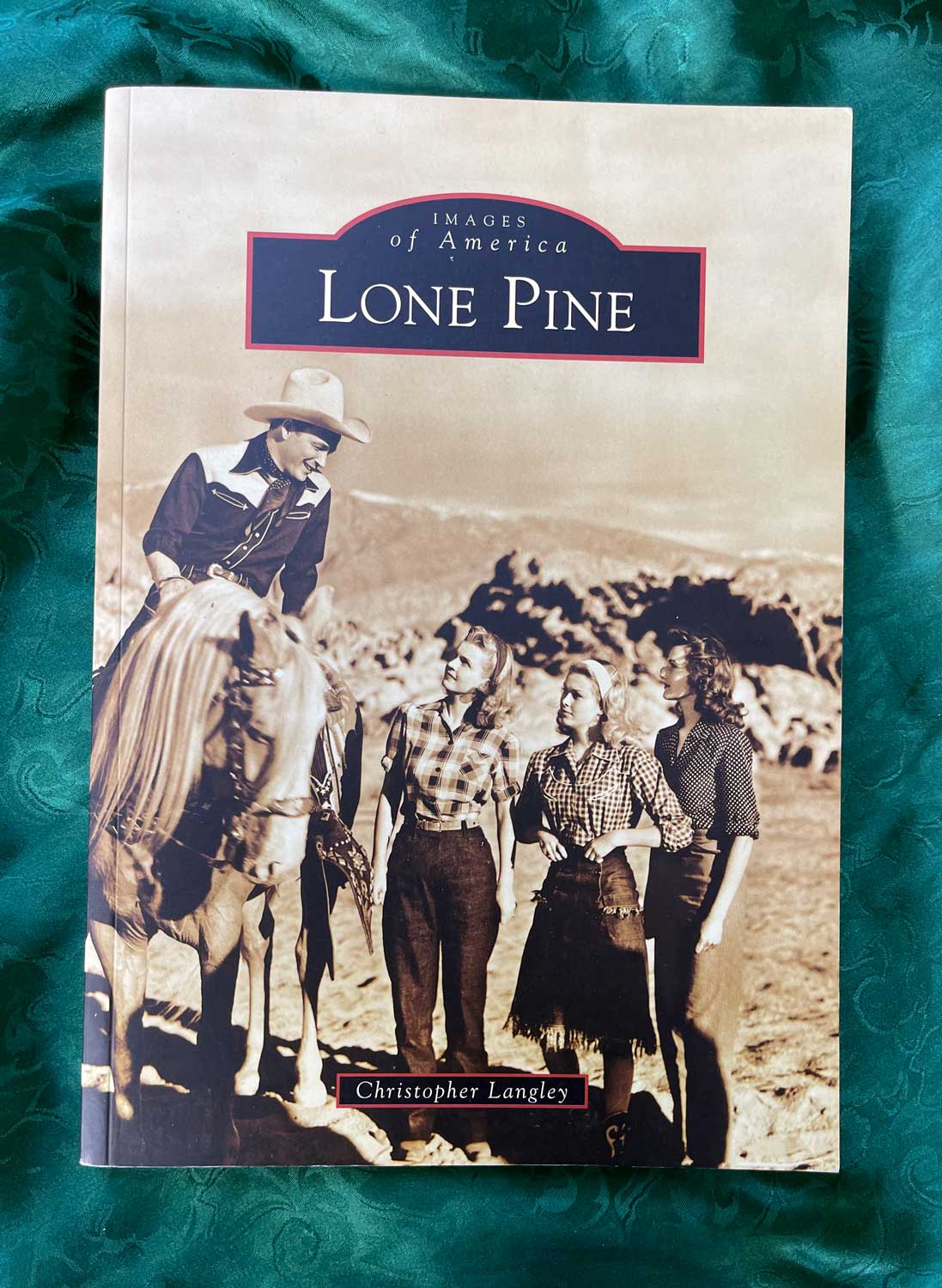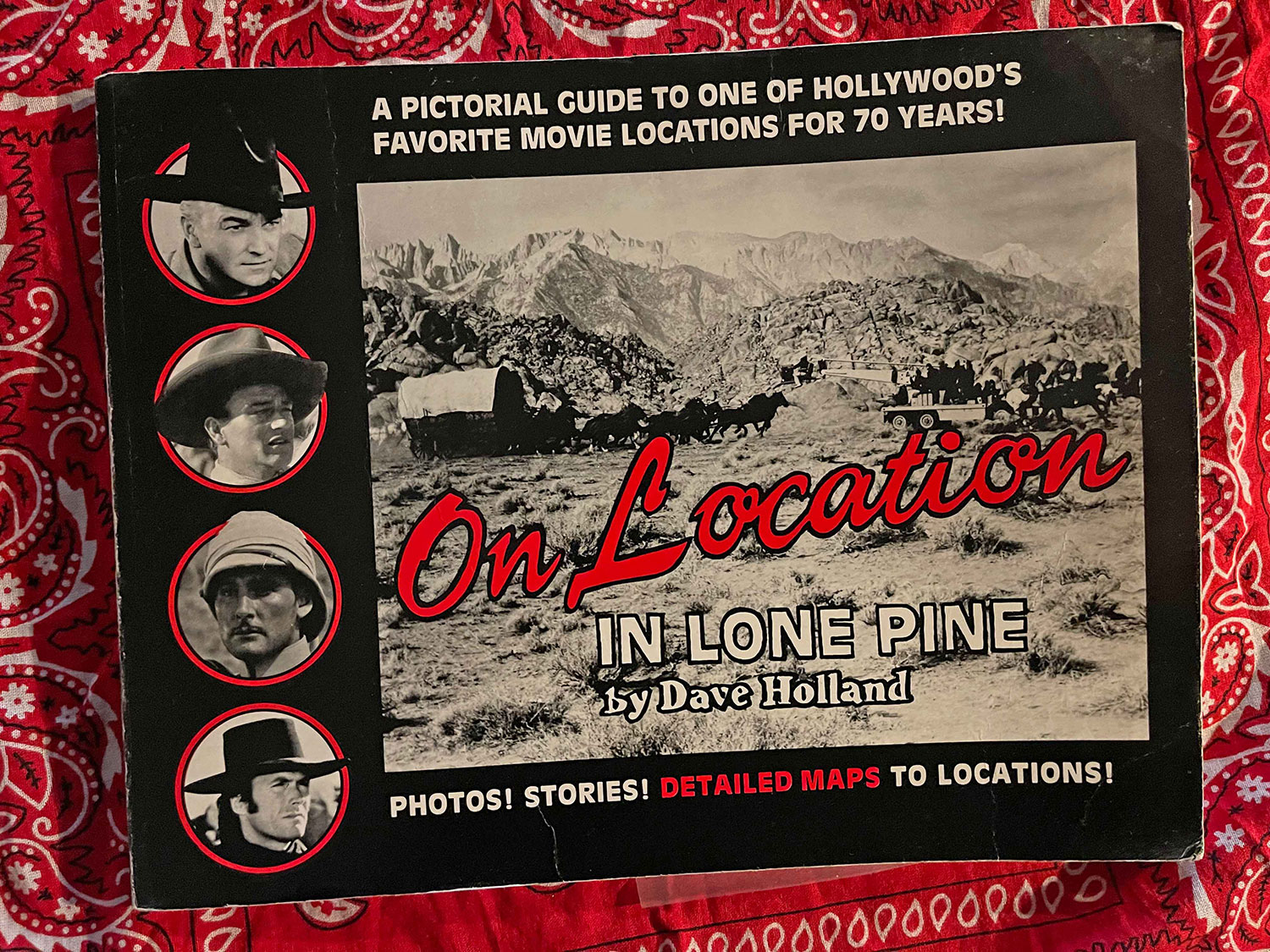Resources
Extra Stuff That You Will Find Useful
In the museum gallery, surrounded by the largest Western back lot in the country, you are introduced to the old and new legends of the Western screen. The gallery exhibits contain memorabilia and information about Westerns from the earliest days of the silent screen to some of the latest.
With an emphasis on the epic landscapes of the local region, including the Alabama Hills, Owens Valley, the Sierra Nevada and Death Valley, the collection highlights the dramatic role landscape has played in the great Hollywood productions filmed in the area for just over 100 years.
Showcasing memorabilia from the many movies filmed in the area, the museum boasts an extensive collection of real movie costumes, movie cars, props, posters and other memorabilia. This collection tells the story of filming in the area in and around Lone Pine from the early days of The Round Up to the modem blockbusters of today such as Quentin Tarantino’s award winning “Django Unchained”.
Wikipedia provides a very useful and slightly interactive list (you can change the layout) of most of the films that were shot in Lone Pine, California and the surrounding area, including the Alabama Hills and Whitney Portal.
by Chris Langley, 2007
Lone Pine’s history is as dramatic and violent as the magnificent landscape in which the town is located. Long before the first white settlers arrived during the Gold Rush, small groups of Paiute-Shoshone Indians lived in the area. With the discovery of gold and silver, miners and ranchers supplying food for the mines came into violent conflict with the native inhabitants between 1860 and 1865. In the 1870s, the Cerro Gordo mines (the largest silver strike in the state) buoyed the growth of Los Angeles.
At the turn of the century, the City of Los Angeles clandestinely bought up land and water rights and initiated a period of conflict with the Owens Valley. In the 1920s, Hollywood discovered the Sierra Nevada Mountains and high deserts of the area. Over 400 films and countless commercials have been filmed in Lone Pine, featuring such stars as John Wayne, Gene Autry, Errol Flynn, Tyrone Power, Rita Hayworth, Barbara Stanwyck, and Brad Pitt.
These semi-regular books are an absolute treasure trove of wonderful edited Lone Pine articles. All the articles are well written and insightful and reflect the passion of the authors. And every article is accompanied with a feast of carefully selected images. Many of the issues also contain a marvellous portifolio of stunning photos from ace photographer Don Kelsen, formerly of the L.A. Times.
The editors changed the publication title from “Lone Pine in the Movies” to “Lone Pine and the Movies” in 2017.
They can be purchased at the Lone Pine Museum of Western History or from various online booksellers such as Amazon.
by Dave Holland, 1990
The bible on Lone Pine movie locations by the man who put Lone Pine on the map.
by Dave Holland
Dave Holland shows you where they made the movies in two excellent DVDs.
by Johnny Bond
In 1940, when Johnny Bond went to work for Gene Autry as a member of the Jimmy Wakely Trio, Autry was arguably the most popular entertainer in the country. He was Number Four on the list of Hollywood’s Top Ten Box Office Stars; he had sold millions of records as one of the most popular recording artists of the 1930s; and his Melody Ranch Show, heard weekly over the CBS Radio Network, sold billions of sticks of Doublemint Chewing Gum for its sponsor during a 17-year run. He also performed before sellout crowds, two shows a day for 21 straight days, in New York’s Madison Square Garden.
Johnny Bond was one of only a few members of the Autry troupe to participate in every phase of Gene’s incredibly successful entertainment career. And he has a story to tell—lots of them, actually.
by Francis M. Nevins
Clarence E. Mulford spent his creative years writing a vast saga of interlocking novels and stories, most of them dealing with the Bar-20 ranch and the men who called it home, chief among them a certain Hopalong Cassidy. Eventually Mulford’s works became the nominal source of 66 Hollywood films, made between 1935 and 1948, and a 52-episode TV series (1952-54), all starring William Boyd as a character with the same name but very different from Mulford’s.
Hopalong Cassidy: On the Page, On the Screen covers each of Mulford’s books and each of the Cassidy theatrical films in full detail. A comprehensive index enables readers interested in almost anyone or anything linked to the books or films—including eventual stars like Robert Mitchum, George Reeves, Jan Clayton and Barbara Britton—to find the relevant material instantly.
A snippet from the Wikipedia entry on "Lone Pine"
From Wikipedia:
In 1920, the history of Lone Pine was dramatically altered when a movie production company came to the Alabama Hills to make the silent film The Round-Up.[12] Other companies soon discovered the scenic location, and in the coming decades, over 400 films, 100 television episodes, and countless commercials have used Lone Pine and the Alabama Hills as a film location.[12] Notable films shot here in the 1920s and 1930s include Riders of the Purple Sage (1925) with Tom Mix, The Enchanted Hill (1926) with Jack Holt, Somewhere in Sonora (1927) with Ken Maynard, Blue Steel (1934) with John Wayne, Hop-Along Cassidy (1935) with William Boyd, The Charge of the Light Brigade (1936) with Errol Flynn, Oh, Susanna! (1936) with Gene Autry, Rhythm on the Range (1936) with Bing Crosby, The Cowboy and the Lady (1938) with Gary Cooper, Under Western Stars (1938) with Roy Rogers, and Gunga Din (1939) with Cary Grant.
In the coming decades, Lone Pine and the Alabama Hills continued to be used as the setting for Western films, including West of the Pecos (1945) with Robert Mitchum, Thunder Mountain (1947) with Tim Holt, The Gunfighter (1950) with Gregory Peck, The Nevadan (1950) with Randolph Scott, Bad Day at Black Rock (1955) with Spencer Tracy, Hell Bent for Leather (1960) with Audie Murphy, How the West Was Won (1962) with James Stewart, Nevada Smith (1966) with Steve McQueen, Joe Kidd (1972) with Clint Eastwood, Maverick (1994) with Mel Gibson, and The Lone Ranger (2013) with Johnny Depp. Through the years, non-Western films also used the unique landscape of the area, including Alfred Hitchcock’s Saboteur (1942) with Robert Cummings, Samson and Delilah (1949) with Hedy Lamarr, Star Trek V: The Final Frontier (1989) with William Shatner, Tremors (1990) with Kevin Bacon, The Postman (1997) with Kevin Costner, and Gladiator (2000) with Russell Crowe.








